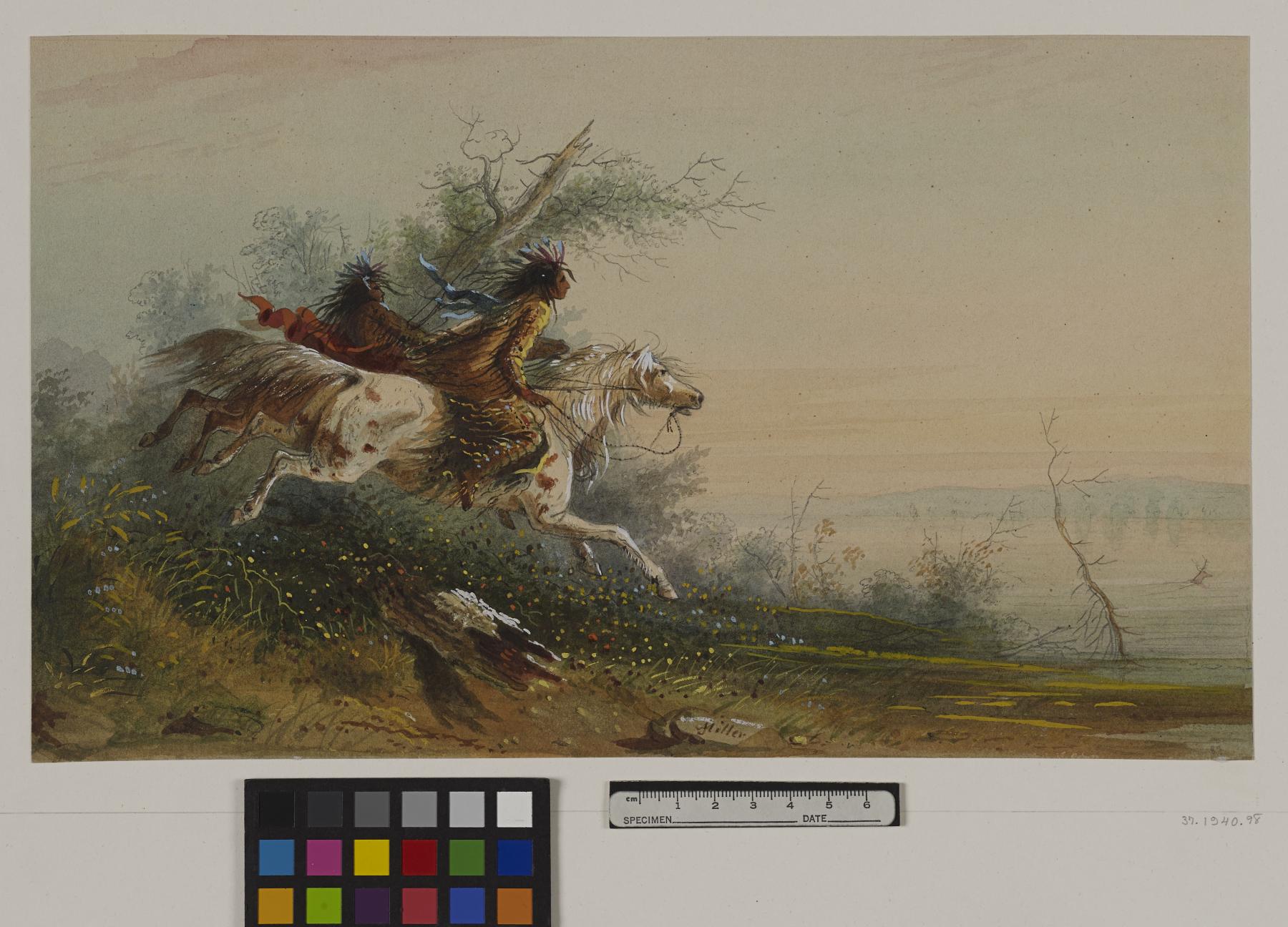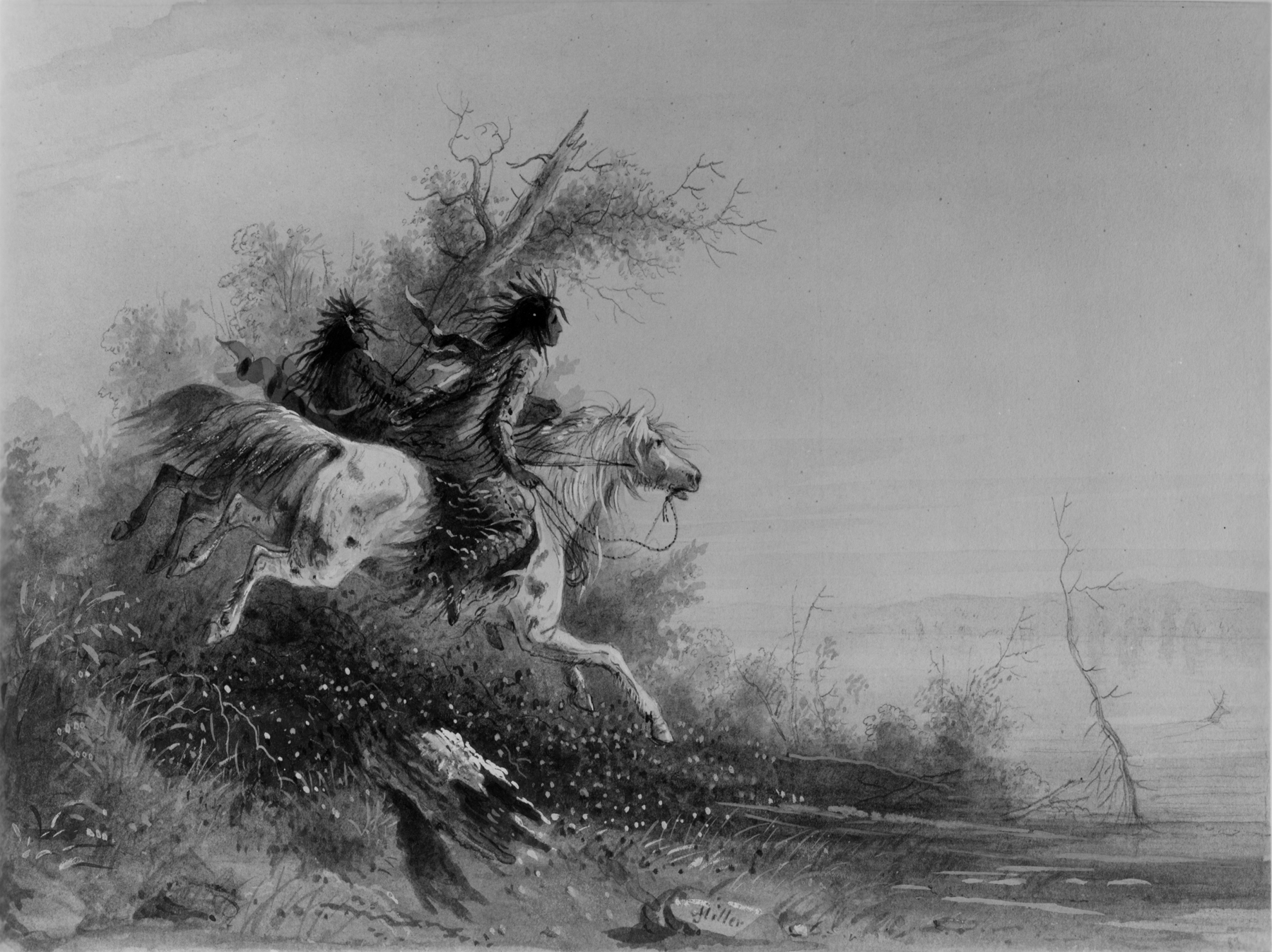Elk Swimming the Platte
(18th and 19th Centuries )
Extracts from Alfred Jacob Miller’s original text, which accompanied his images of Native Americans, are included below for reference.
"After an exciting chase over the prairies, the Indian hunters have at length driven the Elk just where they would like to have him. The Elk in his extremity has plunged into the Platte River, and making for the opposite shore, while the hunters are approached the margin at full gallop, knowing very well that if he is not captured before he reaches the other side, there is slender chance for them. Even in the water he is a dangerous customer, for he has a trick of using his long horns to great advantage, and keeping his enemies at bay. The Platte varies from half a mile to three quarters in breadth at this point, and when swollen by recent rains, is a formidable and rapid river,- very often however it is so shallow that charettes cross it without water covering the hubs of the wheels. The pie-bald horse is held in great esteem,- the manner in which the Trappers described their breeding was similar to that used by Jacob of old among Laban's flocks of cattle." A.J. Miller, extracted from "The West of Alfred Jacob Miller" (1837).
In July 1858 William T. Walters commissioned 200 watercolors at twelve dollars apiece from Baltimore born artist Alfred Jacob Miller. These paintings were each accompanied by a descriptive text, and were delivered in installments over the next twenty-one months and ultimately were bound in three albums. Transcriptions of field-sketches drawn during the 1837 expedition that Miller had undertaken to the annual fur-trader's rendezvous in the Green River Valley (in what is now western Wyoming), these watercolors are a unique record of the closing years of the western fur trade.
Inscription
Provenance
Provenance (from the French provenir, 'to come from/forth') is the chronology of the ownership, custody, or location of a historical object. Learn more about provenance at the Walters.
William T. Walters, Baltimore, 1858-1860, by commission; Henry Walters, Baltimore, 1894, by inheritance; Walters Art Museum, 1931, by bequest.
Conservation
| Date | Description | Narrative |
|---|---|---|
| 3/9/1989 | Loan Consideration | examined for loan |
Geographies
USA (Place of Origin)
Measurements
H: 7 11/16 x W: 12 7/8 in. (19.6 x 32.7 cm)
Credit Line
Commissioned by William T. Walters, 1858-1860
Location in Museum
Not on view
Accession Number
In libraries, galleries, museums, and archives, an accession number is a unique identifier assigned to each object in the collection.
In libraries, galleries, museums, and archives, an accession number is a unique identifier assigned to each object in the collection.
37.1940.98







